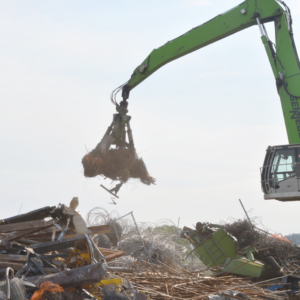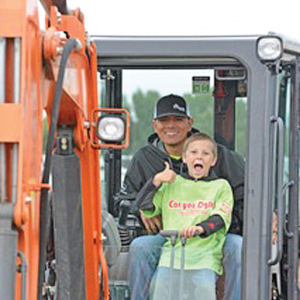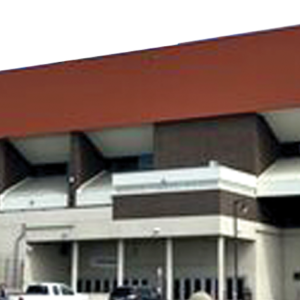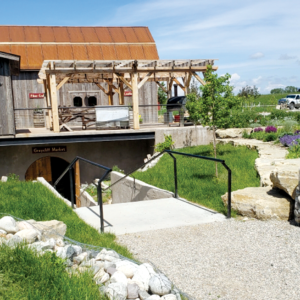Pacific Steel & Recycling is looking to the future. In so doing, the company has announced plans to add a $2 million to $3 million repository to support its operation in Lockwood, one that will serve for decades to come.
Pacific Steel & Recycling, headquartered in Great Falls, with 46 locations in nine northwestern states, provides steel services, including recycling steel and other metals. One of its recycling plants is in Lockwood, where cars, trucks and white goods (appliances) that have come to the end of the road, are shredded and processed as scrap metal to be reused in a variety of American products.
During the process, about 25 percent of the material, otherwise known as auto shredder residue (ASR), (i.e., foam, plastics, glass, tires) goes to waste. This material will likely, someday, have great value, as new technologies and market innovations emerge, but as it is most of the un-recyclable material from the Lockwood facility goes to the Billings landfill. Not only is it taking up valuable space at the landfill, it is no longer retrievable by Pacific Steel should it become valuable— as it most certainly will, according to Marshall Knick, Vice President of Recycling Operations at Pacific Steel, and soon to be the company’s new CEO.
Pacific Steel’s solution is to build their own landfill of sorts, called a repository, in which to store the materials. Not only will it relieve pressure on the city’s landfill but it will allow Pacific Steel & Recycling to maintain future control of it.
Who knows,” said Knick, “one day we may dig it all up,” referencing the potential of future technologies that will make retrieving some of the materials cost effective, or the emergence of new uses for materials that will create new markets.
Picking up a package of the scrap material — which is chopped into wedges or chunks about four or five inches in size — Knick said that they know there is still some trace steel left in that material, they just haven’t developed a process yet to be able to remove it.
As an example of how times change, Knick points out that at one time they did not know how to separate copper from its wire harness in automobiles. Now they do and they are able to retrieve a very valuable commodity.
The company is in the process of getting the permits and approvals needed from the state to develop a repository at the corner of the Shepherd Acton Road and Highway 87. They purchased 320 acres three years ago and have been working under oversight of the Department of Environmental Quality (DEQ), designers and engineers to develop the site that will not only serve the needs of Pacific Steel & Recycling for perhaps as much as a century to come, but will do so in an environmentally sound way. They have had meetings will local property owners so the neighborhood and community know what’s going on.
The Montana DEQ is a few weeks away from completing its draft environmental assessment (EA) study, said Knick at a community open house at the Shepherd Fire Station last week.
DEQ is currently in the process of completing the draft EA document outlining the proposed project which will be the subject of a public comment period, which will be announced and publicized shortly after completion[BC1] of the study. During the public hearing period, DEQ will be seeking public comment before making its final decision on licensing the facility.
It is hoped that the site will be fully operational by the middle of next July.
Knick underscored that the repository would not be possible without the development of the Billings Bypass.
About 90 acres of the property at Shepherd Acton Road and Highway 87 will be divided into five-acre “cells,” each of which, as they are used, will be secured from storm water drainage with synthetic liners. However, one of the reasons for choosing that site, explained Pacific Steel technicians, is that there is very little ground water. They also noted that what water there is, is so high in minerals that it is unfit for consumption for both, humans and livestock. For example, sulfate content of 250 ppm is the recommended EPA limit for human consumption and the ground water at this location has 6000 ppm.
The site will be fenced off and no one, other than workers, will be allowed access. Any deposited materials will be covered by dirt at the end of each day. How quickly a single cell can serve as a repository depends on the rate of recycling, which can vary, but it is expected that it will take about five years to fill one cell. On average the Lockwood plant recycles 8000 tons of steel a month, which generates about 2,000 tons of ASR per month. Only about five to ten truckloads of material is expected on a daily basis. Consequently, the repository’s footprint will be relatively small (i.e., less than 25 acres over 25 years —- or approximately one acre per year).
When full, a cell will be closed by placing five feet of native soil over the top and the land reclaimed to return to its natural state.
A benefit to the Shepherd community will be the installation on the site of a 30,000 gallon water cistern, or what is commonly called a “dry hydrant,” to assist in fire protection. The dry hydrant will serve the entire community, explained Shepherd Fire Chief Phil Ehlers. Having a dry hydrant at that location improves the community’s ISO rating which goes into calculating the cost of fire insurance for property owners, as well as providing a resource for fighting fires, including wildland fires.
The repository will be open and operational from hours of either 8 am to 5 pm or 7 am to 4 pm.
The repository will create one or two full time positions.
Pacific Steel and Recycling is an employee owned company that employs 900 people. The company has a long history and rich tradition in the Northwest. It was founded as a “one-man operation” in Spokane, Washington. Joe Thiebes emigrated from Germany in the 1880s and followed his family’s business tradition of trading hides and furs. In the early 1920s, he sent his son – also Joe Thiebes – to start Pacific Hide & Fur Depot in Great Falls. “During World War I, the company expanded beyond furs and hides into collecting ferrous and nonferrous scrap,” a move that eventually led the company to “branch out in the 1950s into sales of new steel products. The business continued into the third generation, with another son – again named Joe – joining forces with his father as the company steadily opened additional locations.
Pacific Steel and Recycling has locations in Washington, Nevada, Idaho, Utah, Wyoming, South Dakota, North Dakota, Colorado, and Montana.








